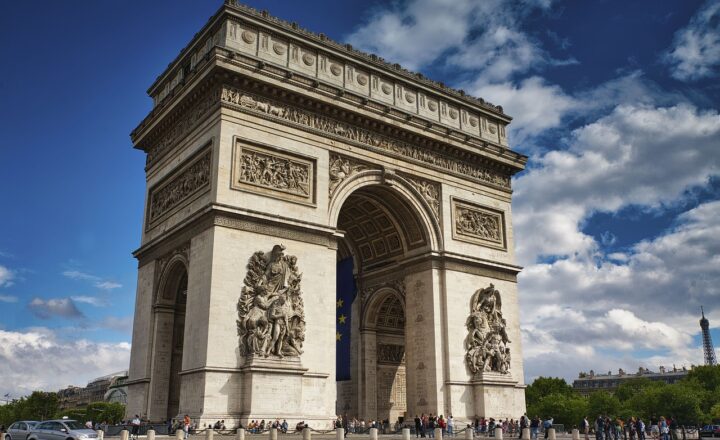The Importance of Preserving Cultural Heritage Sites: Why We Need to Protect History
November 13, 2024

Cultural heritage sites offer a lens into our past, serving as physical reminders of our shared history, traditions, and identities. These locations, ranging from ancient ruins to historic buildings, play a pivotal role in shaping our understanding of civilization and culture. However, they face numerous threats, including urbanization, climate change, and neglect. This article delves into the critical importance of preserving cultural heritage sites and the need for proactive measures to protect our historical legacy for future generations.
1. Understanding Cultural Heritage Sites
Cultural heritage sites encompass monuments, landscapes, traditions, and artifacts that embody the history and culture of a community or nation. These can include:
- Architectural marvels: Structures like the Great Wall of China or the Pyramids of Egypt represent the architectural prowess of their time.
- Archaeological sites: Excavated areas like Pompeii or Machu Picchu reveal insights into past civilizations.
- Cultural landscapes: Regions shaped by cultural practices, like the rice terraces of the Philippines.
- Intangible heritage: Traditions, rituals, and performances unique to specific communities, such as the art of Japanese tea ceremonies.
The UNESCO World Heritage List, established in 1972, aims to protect sites of “outstanding universal value”. However, with over 1,100 sites listed worldwide, many still remain unprotected amidst growing threats.
2. The Value of Cultural Heritage Preservation
Preserving cultural heritage sites offers numerous benefits:
- Education: Cultural heritage sites serve as educational resources, allowing local communities and travelers to learn about history. They inspire curiosity and foster awareness of social and cultural dynamics that shape our world.
- Economic Benefits: Many heritage sites attract tourists, driving economic growth in local communities through job creation and tourism-related income. Estimates suggest that cultural tourism accounts for about 40% of global tourism revenue.
- Identity and Pride: These sites are often tied to national or local identities, fostering a sense of pride among residents. They remind people of their roots, helping to preserve communal memories.
- Biodiversity Protectors: Many cultural landscapes also support local ecosystems, maintaining biodiversity through traditional practices such as farming and land management.
3. Threats to Cultural Heritage Sites
Despite their significance, cultural heritage sites face several threats:
- Urbanization: Rapid urban development often leads to the destruction of historic sites as cities expand. Construction activities can also lead to accidental damages.
- Climate Change: Rising sea levels and extreme weather put many sites at risk. The ancient city of Venice, for example, suffers from frequent flooding that threatens its preservation.
- Neglect and Vandalism: Many sites are left unprotected due to either lack of funding or public attention. Vandalism, whether intentional or accidental, also poses a significant threat.
- Conflict and War: Cultural heritage sites are often casualties of war, as evidenced by the destruction of ancient sites in Syria and Iraq.
4. Why We Need to Act Now
As stewards of history and culture, it is our responsibility to protect cultural heritage sites. Here’s why immediate action is essential:
- Awareness Raising: Increasing public awareness about the value of cultural heritage can drive grassroots movements for preservation efforts.
- Legislation and Policy Changes: Governments and organizations must develop stronger laws and policies to protect cultural heritage sites from exploitation and destruction.
- International Cooperation: Global problems require global solutions. International partnerships can facilitate knowledge-sharing and funding to promote heritage preservation.
- Sustainable Tourism Practices: Encouraging responsible tourism can help sustain local economies while protecting cultural sites. Visitors should be educated on respectful engagement with heritage environments.
5. Case Studies in Successful Heritage Preservation
Several successful heritage preservation initiatives provide a blueprint for effective strategies:
- The restoration of the Acropolis, Greece: Extensive restoration projects have successfully preserved one of the most iconic and historically significant sites in the world, balancing tourism and preservation efforts.
- The regeneration of the historic town of Luang Prabang, Laos: By integrating local culture and modernity, this UNESCO site has become a model for sustainable tourism that supports preservation while boosting local livelihoods.
- The revival of ancient Silk Road trading routes: Collaborative efforts have highlighted and protected cultural sites across multiple countries, showcasing the interconnectedness of cultures and fostering international cooperation.
Conclusion
Cultural heritage sites are invaluable assets that narrate the story of humanity, making them deserving of our protection and preservation. As custodians of our historical legacy, it is imperative that we take collective action to safeguard these treasures against threats both man-made and natural. By investing in awareness, sustainable practices, and cooperative efforts, we can ensure that future generations inherit a rich tapestry of cultural history, fostering understanding and appreciation for the diverse cultures that shape our world today. Let us commit to preserving our past so that it remains a part of our collective future.







